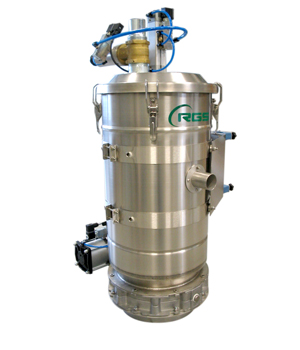How Pneumatic Conveyors are Better Than the Mechanical Ones?
A machine used to move materials from one location to another is called as a conveyor system. They are majorly used in applications to transfer powdered or granular material. Pneumatic Conveyors are widely used in food, pharma, cosmetics sectors & others in which raw materials are in powdered form as they help in speedy and efficient transportation of a wide variety of raw and final materials.

There are many kinds of pneumatic conveyors available. Different kinds of industries use different conveyors, as per their need and convenience.
There are basically two types of conveyors available for shifting loads, namely screw mechanical and pneumatic conveyors. The choice of conveyors basically depends on the specification of the material to be shifted with a unique application.
Materials of fine quality should be shifted using the pneumatic conveyors to avoid loss of quantity while the transfer is done. The particular features of the pneumatic conveyors allow the materials to be aerated and easily be pumped through the product line. Examples of materials perfectly suited for pneumatic conveyors include wheat flour, sugar, sand, metal powders, coal fines, cement powder etc.
The points given below introduce you to the various advantages of pneumatic conveyors over mechanical conveyors:
- Simple routes for easy shift: The pneumatic ones, simplify the route path for transferring bulk materials through hoses or fixed lines. For instance, in dense phase conveyor material is transported with keeping the homogenenity of product intact and does not allow fines to escape out.
- Avoids spillage of materials: They basically eliminate the chance of spillage while transferring the materials as material moves in close loop.
- Low maintenance costs: The mechanical conveyors are complicated machineries compiled of many parts like belts, bearers, rollers all put together. They have abundance of movable parts. There will be a machine breakdown if proper maintenance is not done, resulting in the failure of conveyance of the materials. It’s not just the costs involved in the failure of parts, it also includes the everyday inspection costs & production downtime cost.
Where as in a pneumatic conveyor, the cost of maintenance is very less due to its less complex features. The pumps used are dry and hoppers does not have any complexity in its operation.
- Added safety features: As we deal with a lot of parts in a mechanical conveyor, the concern for safety is also at stake. It is not safe to get too close to the moving components. All the belts, bearers and gears need on time and continuous repairs. There are chances of injury in the finger or hand while dealing with its service. This happens as all the parts are open.
But in a pneumatic conveyor the risk is reduced as the components are sealed. They have packed parts to provide pressure and vacuum in the machine. Thus, there are a very few exposed parts and hence, the risk of any mishap is eliminated.
- Quick and efficient transfer: As the machine is fully sealed the transfer of materials is not disturbed and is done at a faster pace when compared to mechanical ones.
- Expert in moving complex materials: The flexibility in the transport process of pneumatic conveyors has made the machine a master in handling very challenging and fine materials like pharmaceuticals raw material, final blends, food ingredients and powders such as calcium black, calcium carbonate, lead oxide and ceramic dust.
© Copyright 2024 RGS Vacuum Solutions.


